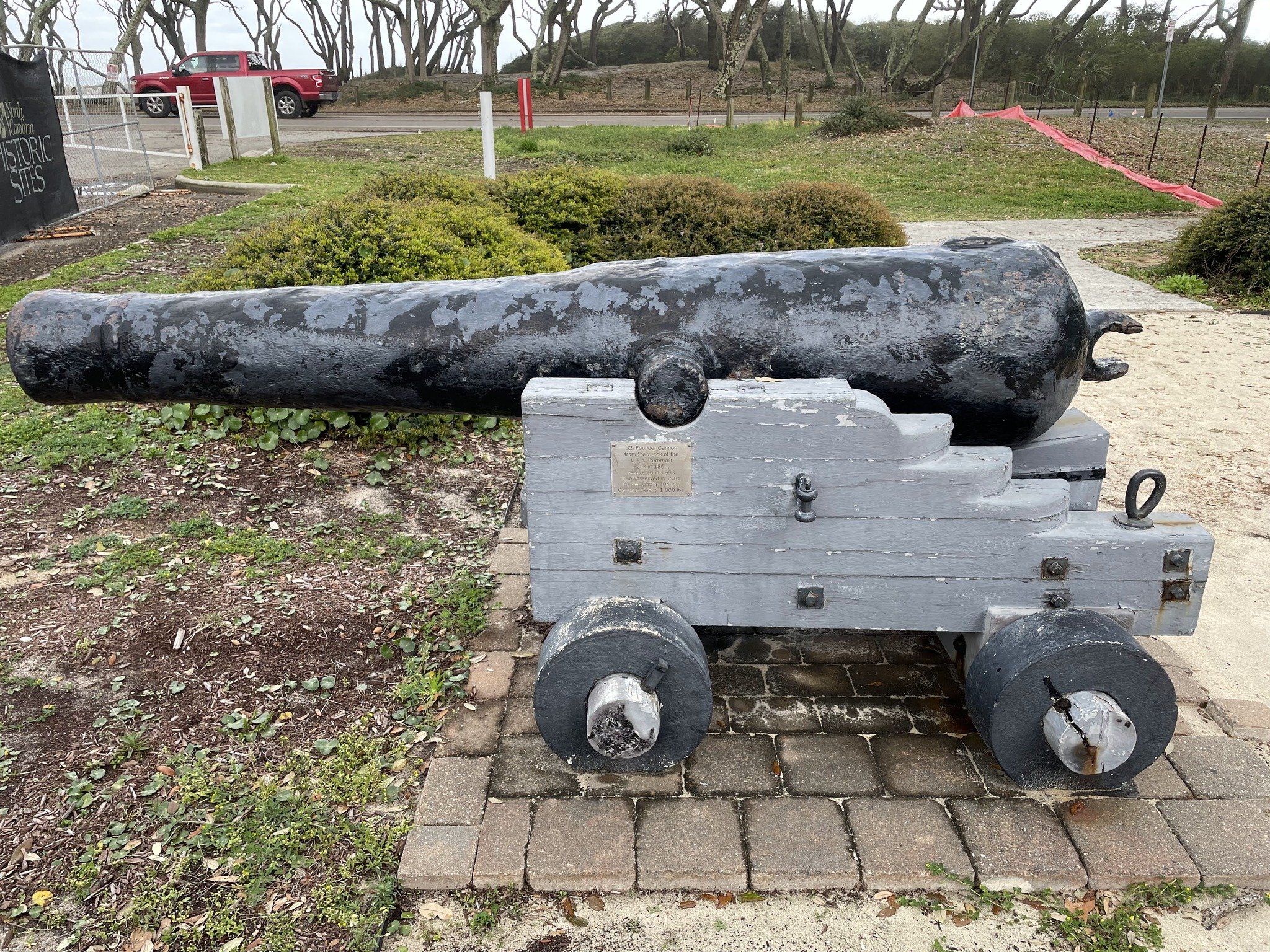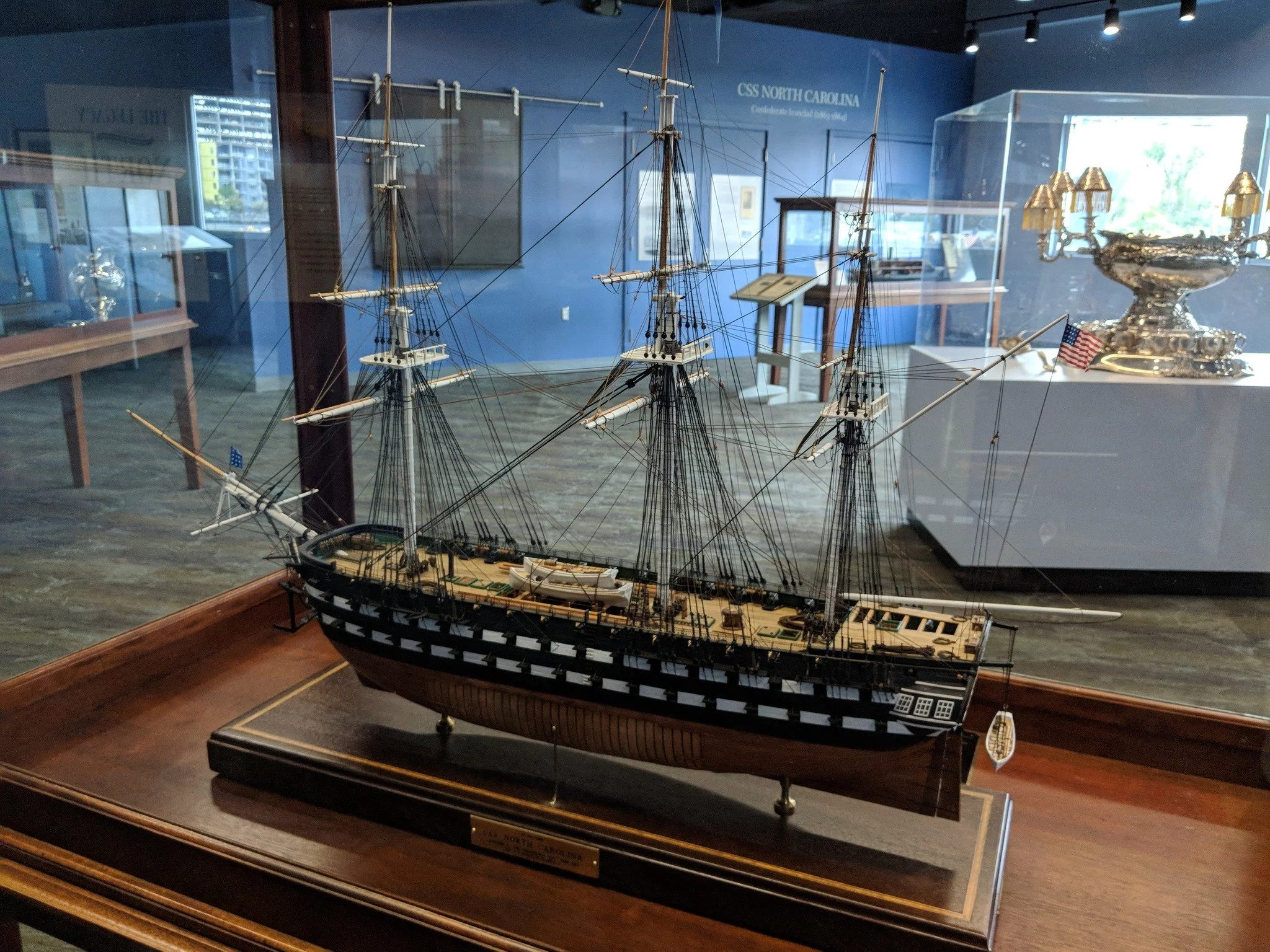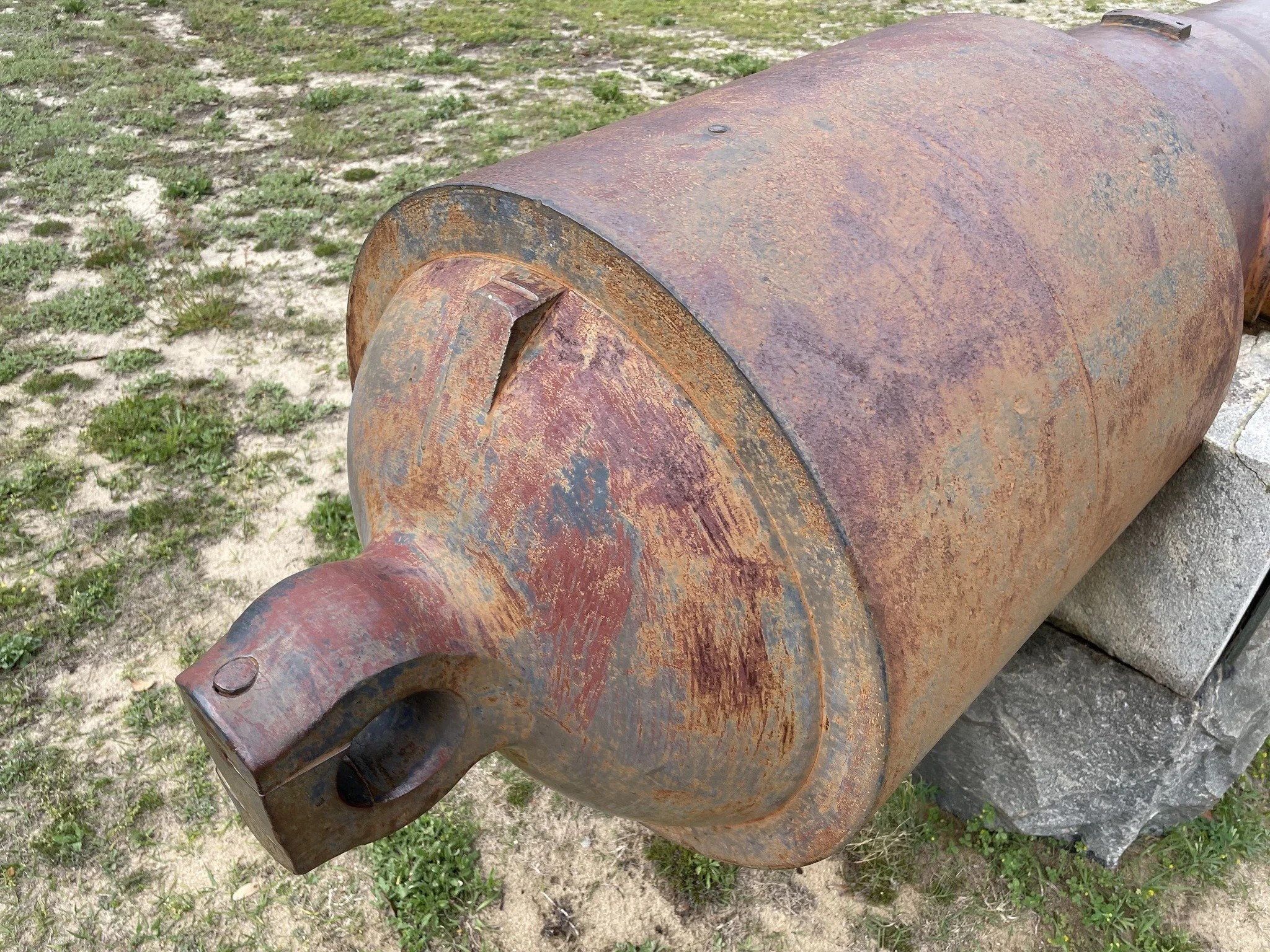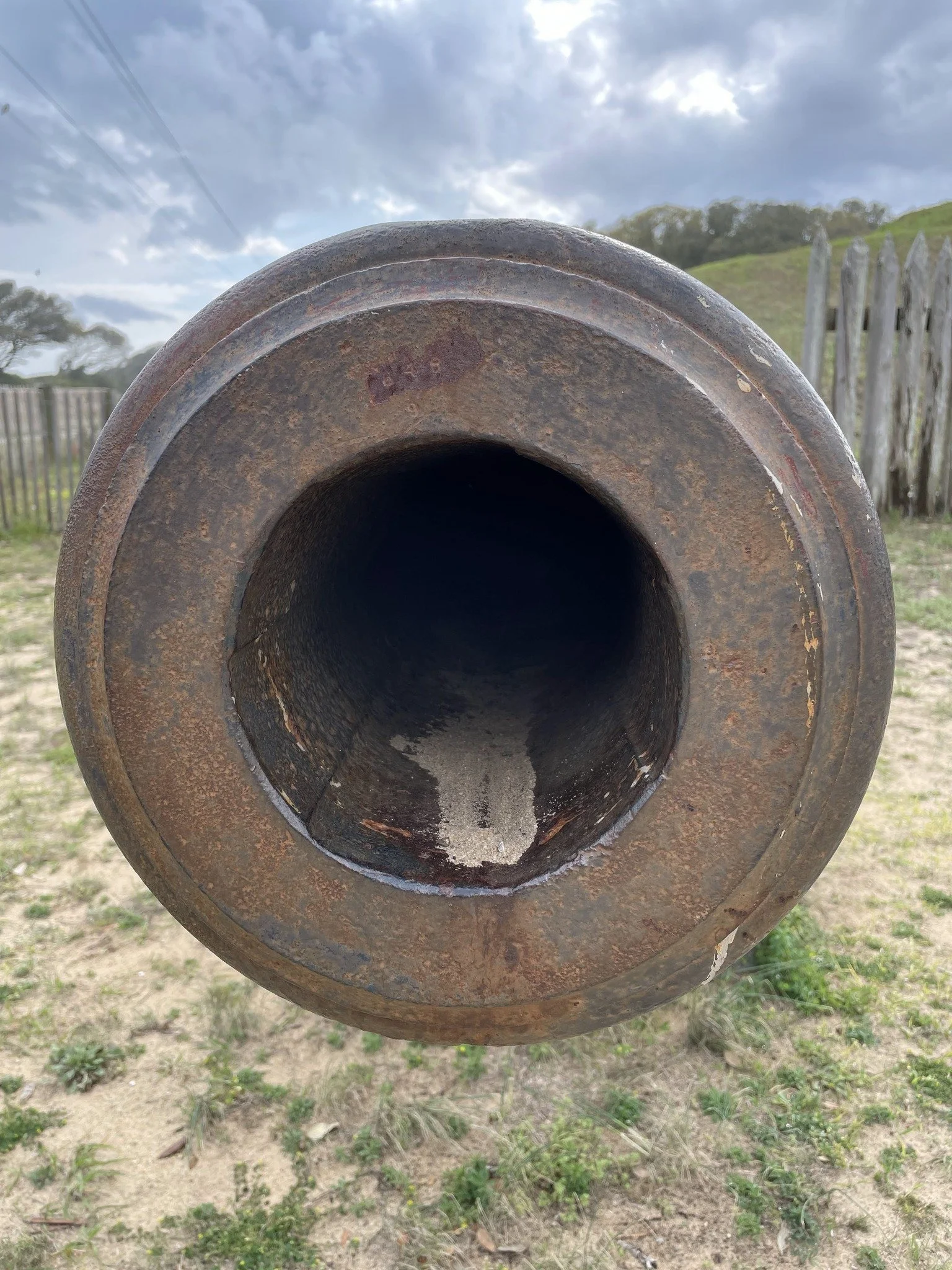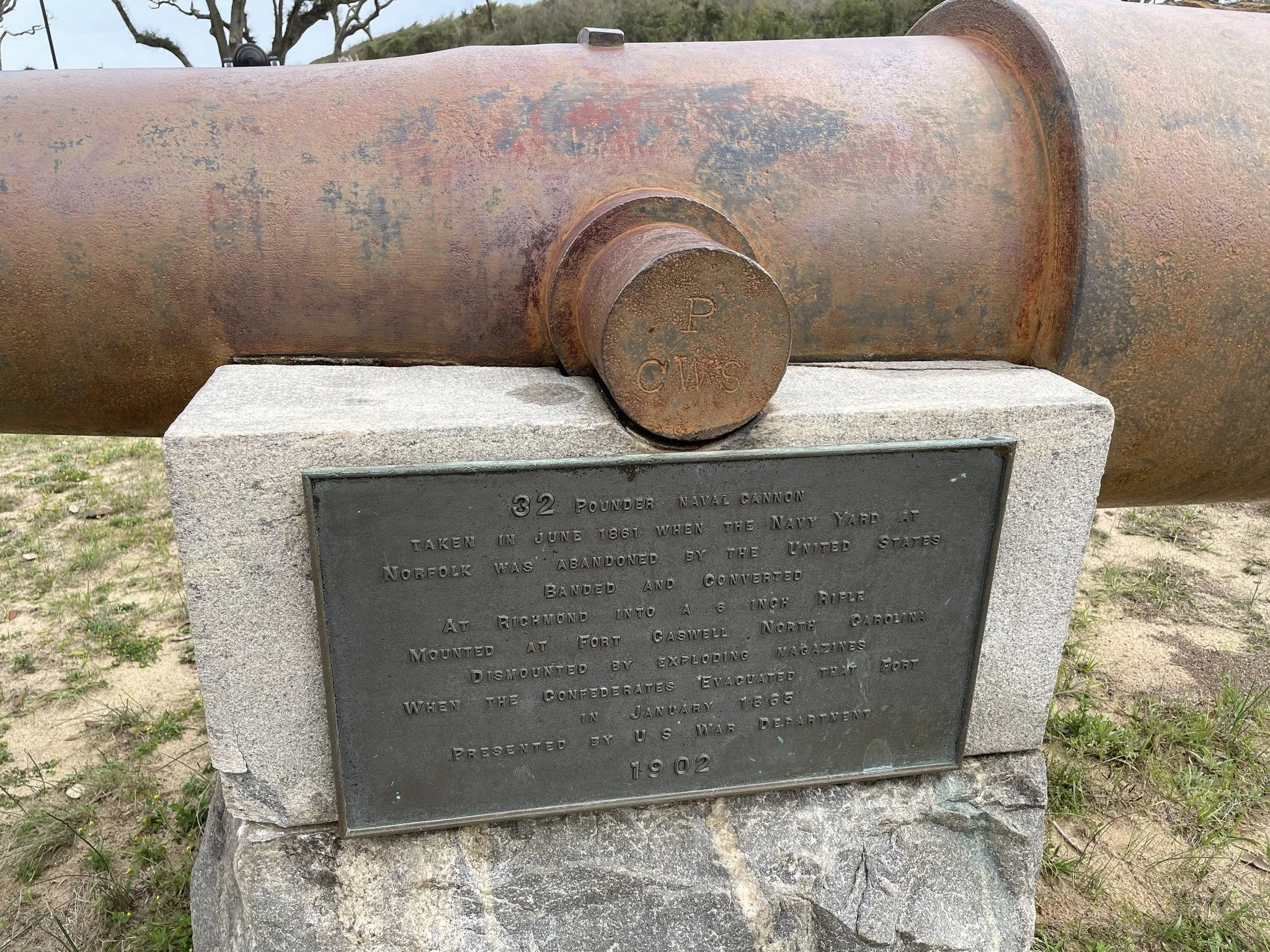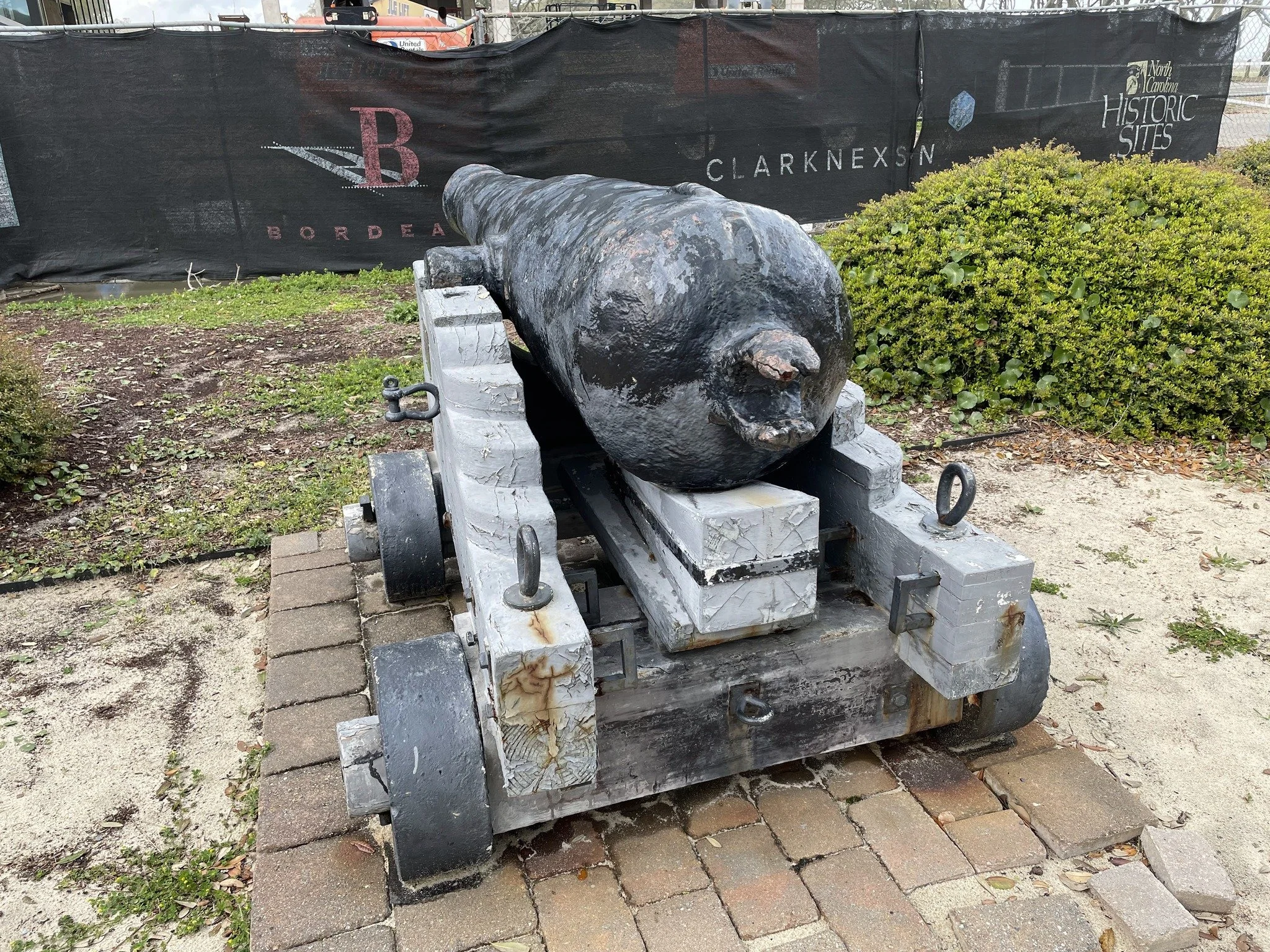The 32-Pounders of Fort Fisher
Two 32-Pounders of 57 Hundredweight, Banded and Rifled, on display at Fort Fisher
Fort Fisher near Wilmington, NC has three naval 32-Pounders (and one modern replica) on display. One was recovered from USS Peterhoff (which sank in 1864). The other two were rifled and banded by the Confederacy. These two banded rifles, originally cast in 1848 and 1852 as 32-Pounders of 57 Hundredweight for the United States Navy, were at Fort Caswell (on the other side of the Cape Fear River approaching Wilmington) during the war and were displayed in Raleigh from the beginning of the 20th Century until 2020. The modern replica (cast steel) was based on measurements taken off of one of the banded rifles.
32-Pounder of 4,700 pounds recovered from the wreck of USS Peterhoff - on display at Fort Fisher
Cast Steel Replica on display at Fort Fisher. This replica intended for display and (I believe) firing demonstrations was based on measurements taken of the rifled and banded originals also now displayed at the fort.
I know some might be quick to overlook these cannon as "just old 32-pounders", but I find the banded rifles fascinating. They were part of the haul of over 1,000 cannon taken when the Gosport Navy Yard was captured (USNI story linked in the comments). I believe that the US Navy in the 1840s and 1850s was transitioning to a uniform 32-pounder armament. Where 12 or 18 or 24 pounder cannon had been used in the classic age of sail, by the 1840s the idea was to use different weights of 32-pounders.
Model of Ship of the Line USS North Carolina. On display at the USS North Carolina Memorial in Wilmington, NC (alongside the 1941 US Navy Battleship).
Light weight 32-pounders (same size ball, much smaller propellant charge) would replace 12 or 18 or 24 pounder cannon aboard the upper decks of the ships of the line and heavy frigates and main decks of small frigates and sloops while the ships of the line gave up their 42-pounders (a move the Royal Navy had made a century before) for more manageable but still heavy 32-pounders of 57 cwt. Having all your armament use the same projectile makes a certain amount of sense. However, as this transition started the era of the shell gun was also beginning. For example, the original armament list of USS North Carolina (a sailing ship of the line commissioned in 1824) included 42-pounders on the lower deck, 32-pounders on the middle deck, and 42-pounder carronades on the upper deck. By the 1850s, her assigned armament was a battery of 8-inch shell guns complimented by an array of 32-pounders. By the time of the Civil War, a smoothbore 32-pounder was obsolescent at best. It lacked the range and accuracy of a rifle and the hitting power of the large smoothbore shell guns of the Dahlgren and Columbiad (and Rodman) type. Faced with limited resources, the Confederacy converted these smoothbores into serviceable rifles. My understanding of the process is that they would be taken to a lathe for the breach area to be turned smooth before a wrought iron band (or bands) to be placed on while hot (and therefore shrink onto the breech while cooling). I would be fascinated to learn how these converted cannon compared in terms of effectiveness to newly made Parrott or Brooke rifles. The diagram of the armament of Fort Fisher shows that a considerable number of the guns were 6 and 3/8 inch smoothbores (32-pounders) and rifles. A display in the museum noted that banded 32-pounders were the "mainstay" of the armament of the fort. Though it seems that 10 inch Columbiads were preferred when available and the critical "Battery Buchanan" at the tip of Federal Point had the imposing armament of two 10-inch Columbiads and two 11-inch Brooke smoothbores.
Display in the magazine of USS North Carolina (BB-55 - 1941) showing the differences in the projectiles and propellant of three ships which share the name USS North Carolina. At the top is the 32-pounder shot (or shell) and propellant of the 1820s ship of the line. In the middle is the 10-inch projectile of the circa 1905 armored cruiser. At the bottom is the 1900 pound HE shell of the existing 1941 battleship. (AP for the 16"/45 gun is 2700 lbs). Even though the 10" shell is a couple of generations post-Civil War, it does a good job of showing how the projectile of a rifled cannon can be longer (and therefore heavier) than a smoothbore.
Converting a smoothbore to a rifle offers the (potential) benefit of greater accuracy as well as the ability to throw a larger projectile because the projectile is conical instead of a simple round ball. The drawback is the heavier weight of the projectile puts a much greater strain on the cannon. This is the reason for the reinforcing band, and it is also the reason that cast iron banded rifles were some of the least reliable artillery pieces of the era. (And please don't think about rifling and not banding a heavy cast-iron cannon.)
When looking at armament lists of forts and naval vessels, I often wonder whether cannon listed as "6.4 inch rifle" are converted 32-pounders or purpose made like the 6.4 inch Brooke.
Additionally, there is another cannon on display at Blakeslee Air Force Recreation Area (the former Fort Fisher Air Force Recreation Area) which looks to me like it might be another of the 32-pounders recovered from USS Peterhoff. If anyone has pictures of that gun, I would be happy to add them to this site.
Additional Views
32 Pounder at Fort Fisher - Detail of Breech
32 Pounder at Fort Fisher - Detail of Rifling
32 Pounder at Fort Fisher - Detail of Trunnion and Plaque
32 Pounder - Detail of Trunnion - 1852 Gun
32 Pounder - Detail of Trunnion - 1848 Gun
32-Pounder of 4,700lbs - Recovered from the wreck of USS Peterhoff - Detail of Breech

